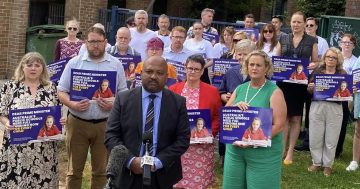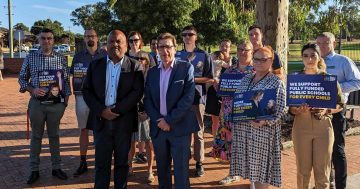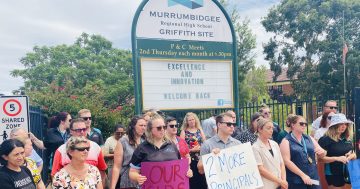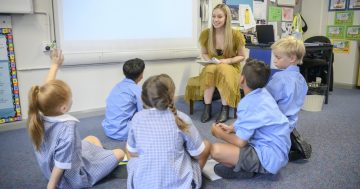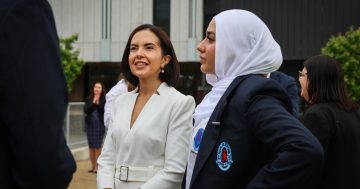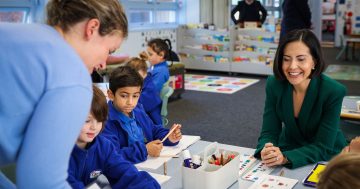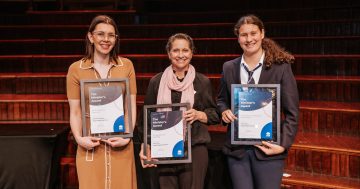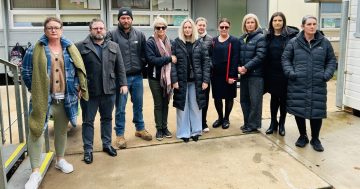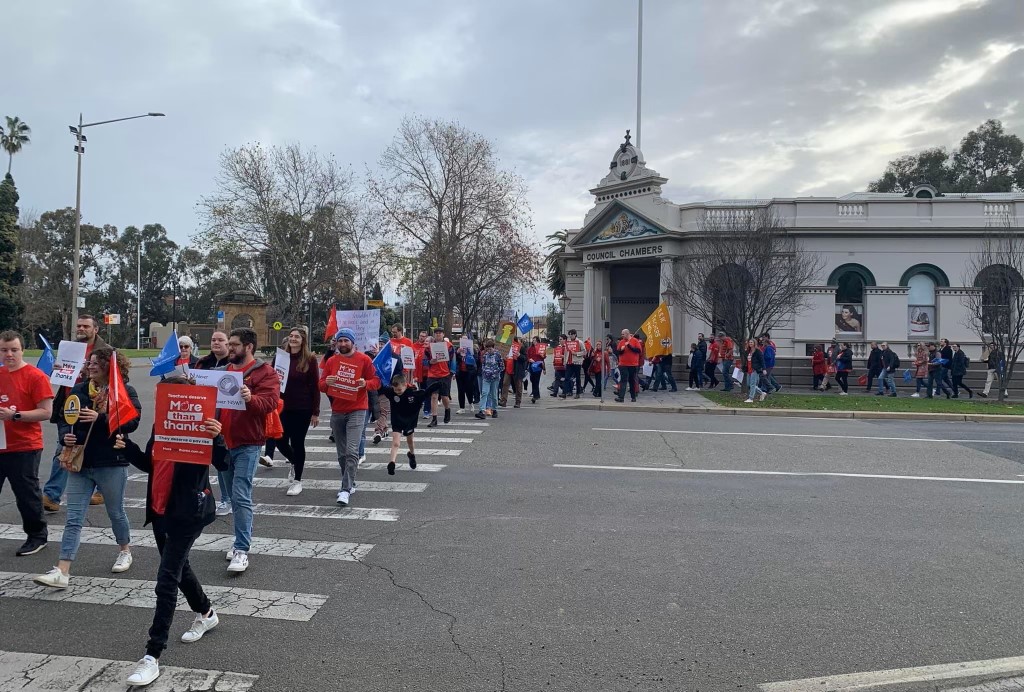
Teachers and their supporters march in Wagga Wagga during a NSW Teachers Federation strike last year.
The ongoing shortage of some 2200 public school teachers in NSW is crippling the education system in the Riverina, with Higher School Certificate students at one local school attending a whopping 94 individual “untaught” classes last term, a union delegate says.
NSW Teachers Federation Riverina country organiser Jack O’Brien said that while the total shortage of available teachers had fallen from a high of more than 3000, about 2200 vacancies remained across the state’s public education system.
He said at Tumut High, with just four vacancies for HSC teachers during last term, the senior students had been forced to complete what study they could without a qualified teacher, supervised by a librarian for some 94 “untaught” classes.
Across the Riverina, Region has also heard from parents of students in primary and high school where numerous classes have been forced to merge, which meant instead of teachers managing the workload of the standard 30-odd student class, they had to work longer, spending less time with individual students and a class size upwards of 70 children.
Region has also obtained a letter sent to parents of students at Wagga Wagga High late last month, saying that the school was unable to fill a number of teaching positions, “making it necessary to collapse a year 7 and year 9 class and resulting in changes across all year groups”, forcing the redrawing of the entire class timetable from 1 May.
“It is worth noting that there will continue to be instances where classes are required to relocate and be under Minimal Supervision structure due to a lack of casual teachers available,” the letter reads.
“We are determined to persevere and maintain our standards of academic excellence in the face of such challenges.”
Across the wider region, Mr O’Brien said the federation was aware vacancies at Tumut High were now at five teachers, Narrandera High School had two vacancies and no casuals and “daily collapsed classes”, Corowa High had more than six teacher vacancies at the end of last term and no casuals, and Wagga Wagga High now had three vacancies and a shortage of casuals.
He said the key issues driving the shortage were unsustainable workloads, pay that had gone backwards in real terms over the past decade, and an ever-increasing burden of department-related paperwork eating into the time teachers had left to plan classes and work directly with students.
The shortage, he said, still included the gamut of teaching positions in permanent, temporary and casual (or relief) categories, meaning that schools were often left without casual teachers available to fill those permanent or temporarily contracted staff who may have needed sick leave.
It was worse in rural and regional areas, a federation survey of teachers in November last year showed. More than 50 per cent of the total number of teacher vacancies could be found outside metropolitan schools, and across the board, resignations were now outpacing retirements.
Mr O’Brien said the situation had been worsening for some 10 years, last year sparking a lengthy NSW parliamentary inquiry and wide-ranging recommendations for reform to help recruit and retain more teachers in the state’s public school system.
But with the committee’s report only being published weeks out from the recent state election that saw Labor rise to power, it was not until after the election, and a second brief committee inquiry to reconsider the issues, that the new State Government acted on campaign pledges to address the shortage.
Since the election, the new Government has pledged to take greater action to recruit and retain more teachers and has largely supported the findings of the parliamentary inquiry recommendations, which Mr O’Brien said the federation supported. The NSWTF was also expecting formal talks on a statewide pay rise for teachers.
But he said it was a major, systemic problem that was “not going away soon”, and particularly in regions such as the Riverina it would be years before the shortage could be fully addressed.







